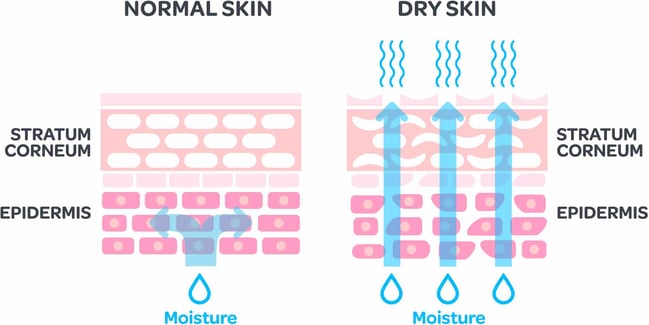Well moisturised and elastic skin is essential for it to function as it should. If skin is dry, its protective function for the body is impaired.
As the largest human organ, the skin forms the barrier between the environment and the inside of the body. It acts as a buffer against external influences, protects the body against solar radiation, weather conditions (such as wind, heat and cold), harmful substances and pathogens.
Normally, sebum and sweat glands continuously secrete a mix of oil and water that keeps the skin smooth. Dry skin develops when lipid production by the sebum glands in the skin is too low and when everyday factors disrupt moisture regulation. A more apt description would be “low-moisture and low-oil skin”. The skin loses moisture and oil (lipids) and is no longer able to compensate for the loss. If the skin is out of balance, the barrier function is disturbed and the skin dries out more.

This can be represented in a simplified form with the brick and mortar model:
Dry skin has tiny cracks and feels like parchment. It is rough, brittle and cracks easily. Dry skin is often tight and causes itching. The skin also tends to scale and crack.
Depending on skin type, a distinction is made between dry skin, normal skin and greasy skin. Most people, however, have a mixed skin type with, for example, greasy facial skin, but dry skin on the rest of the body. Skin type can also change with the seasons and with a person's age, state of health and hormone levels.
This is why most people experience problems with dry skin – at least some of the time. About 30% of the population has dry skin, which is considered to be a separate skin type. Even two thirds of all children under the age of ten years have already experienced dry skin. Three quarters of people over the age of 60 years require intensive care to balance out the lack of lipids and moisture.
For very dry skin
For very dry and scaly skin. Provides long-lasting moisture. Rapidly absorbed.
For very dry skin
For extremely dry and cracked areas of skin. Provides intense moisture, non-greasy.
Distribution through: Hänseler AG / Industriestrasse 35 / CH-9100 Herisau / Tel. +41 71 353 58 58 / mavena@haenseler.ch